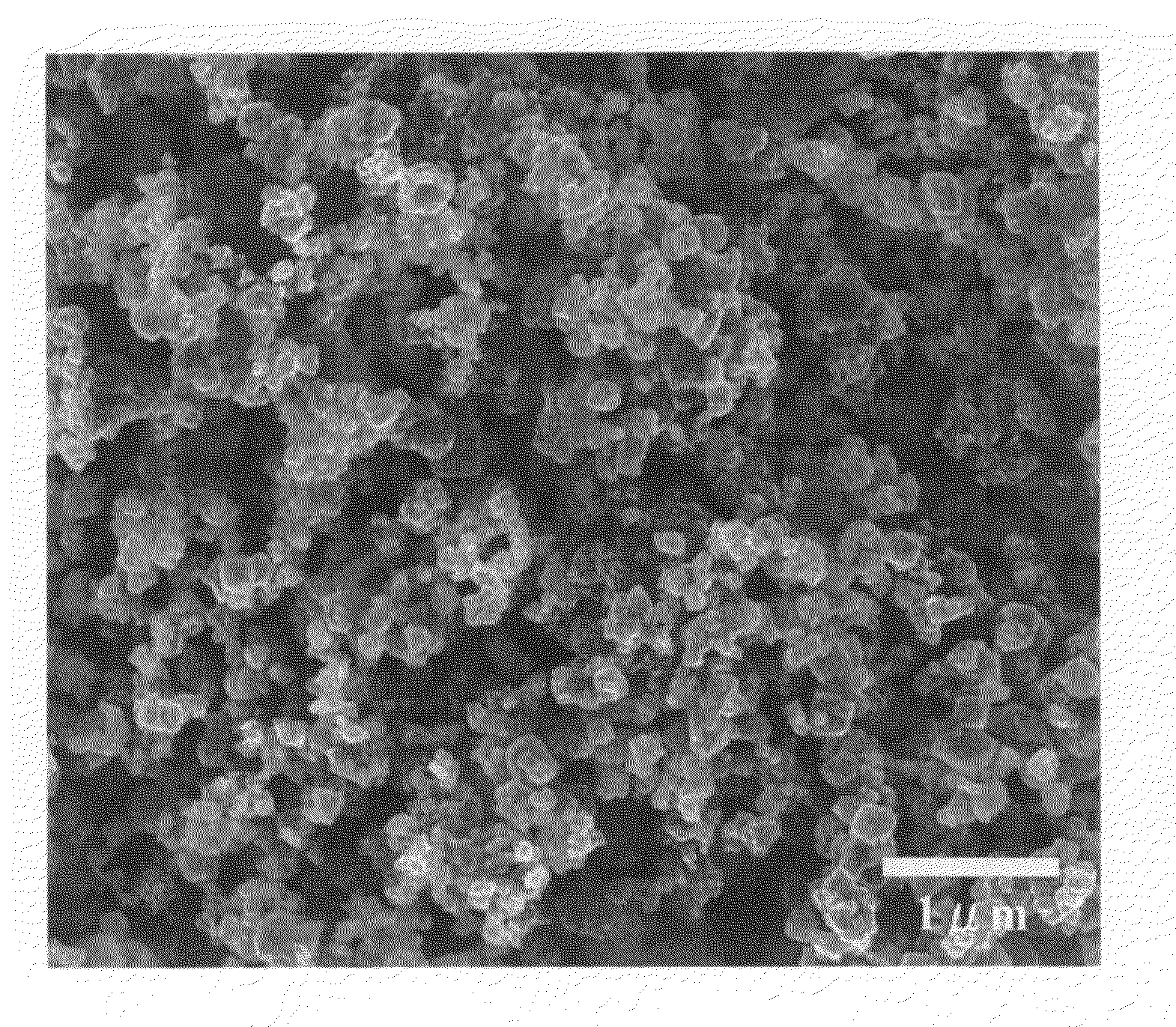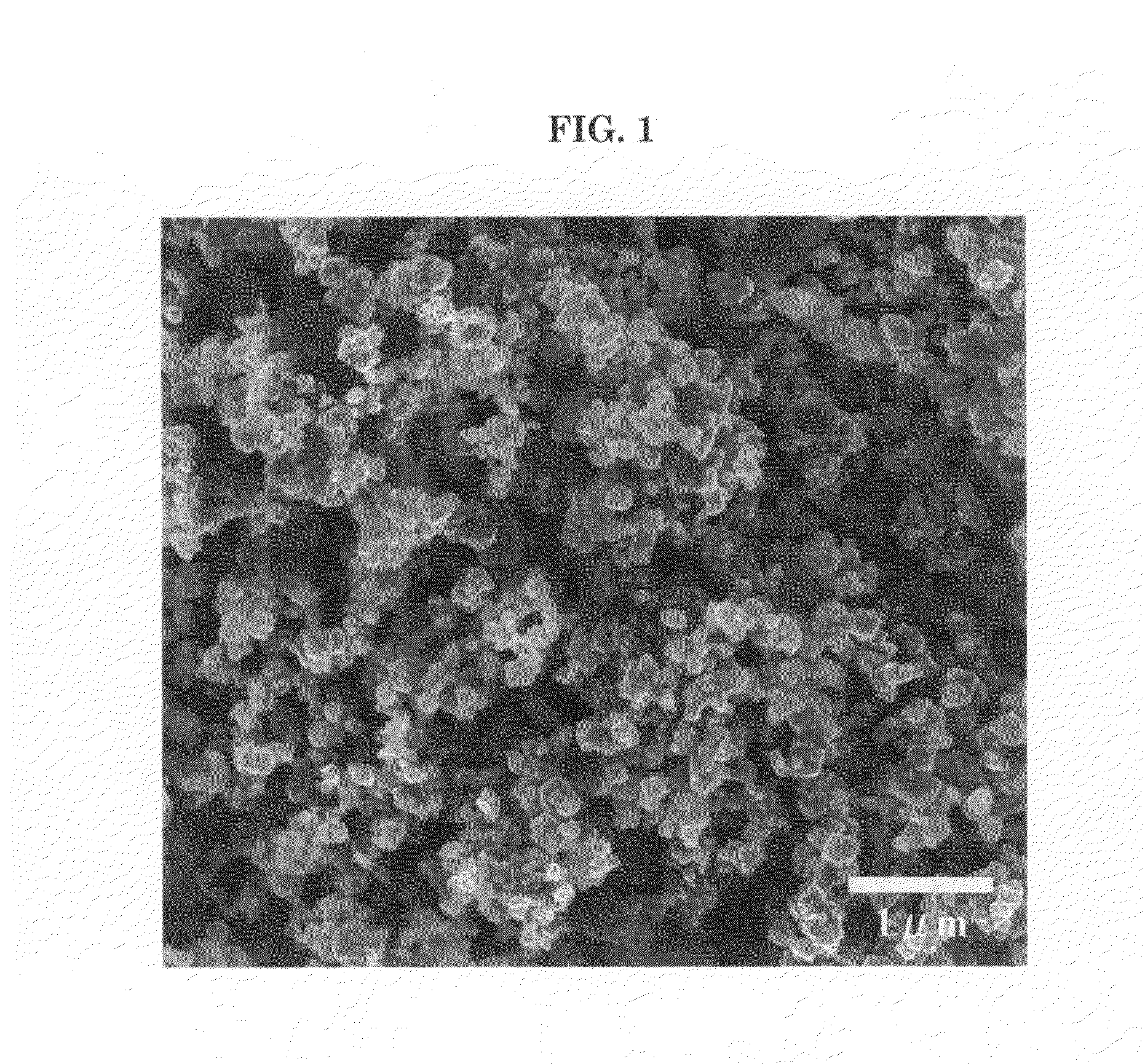Nickel powder manufacturing method
a technology of nickel powder and manufacturing method, which is applied in the field of metal powder manufacturing methods, can solve the problems of increased cost, inability to accurately control composition, and long time-consuming separation, and achieves the effect of convenient processing, uniform particle size and easy operation
- Summary
- Abstract
- Description
- Claims
- Application Information
AI Technical Summary
Benefits of technology
Problems solved by technology
Method used
Image
Examples
example 1
[0040]Nickel nitrate hexahydrate powder was melted by being heated to about 80° C. This melt was formed into droplets with the two-fluid atomizing nozzle, using 300 L / min of forming gas (nitrogen gas containing 3% hydrogen) as the carrier gas, and supplied at a rate of 1 kg / hr in an electrical furnace heated to 1600° C. The oxygen partial pressure inside the furnace was between 10−7 and 10−8 Pa. The resulting powder was captured in a bag filter. When this powder was analyzed by X-ray diffractometry (XRD), transmission electron microscopy (TEM) and scanning electron microscopy (SEM), although some slight oxidation was observed, it was found to consist of substantially single-crystal particles of nickel metal. Under SEM observation, the particles were truly spherical in shape, with a particle size of 0.1 to 1.5 μm, a mean particle size of 0.32 μm and no aggregation.
example 2
[0041]Nickel nitrate hexahydrate powder was melted by being heated to about 80° C. This melt was formed into droplets with the two-fluid atomizing nozzle, using 300 L / min of forming gas (nitrogen gas containing 4% hydrogen) as the carrier gas, and supplied at a rate of 1 kg / hr in an electrical furnace heated to 1600° C. The oxygen partial pressure inside the furnace was 10−12 Pa or less. The resulting powder was captured in a bag filter. This powder was found to be a substantially single-crystal nickel powder consisting of truly spherical particles with a particle size of 0.1 to 1.5 μm (mean particle size 0.30 μm), without aggregation.
example 3
[0042]Ammonium nitrate was added to nickel nitrate hexahydrate powder in the amount of 1.5 moles per 1 mole of nickel, and the mixture was melted by being heated to 60° C. and cooled to room temperature to obtain a nickel nitrate hexahydrate melt containing ammonium nitrate. A nickel powder was obtained as in Example 2 except that the melt was supplied to the two-fluid atomizing nozzle while still at room temperature. When the resulting powder was analyzed as before, it was found to be a nickel powder consisting of substantially single-crystal truly-spherical particles with a particle size of 0.1 to 1.5 μm (mean particle size 0.30 μm), without aggregation.
PUM
| Property | Measurement | Unit |
|---|---|---|
| temperature | aaaaa | aaaaa |
| pressure | aaaaa | aaaaa |
| particle size | aaaaa | aaaaa |
Abstract
Description
Claims
Application Information
 Login to View More
Login to View More - R&D
- Intellectual Property
- Life Sciences
- Materials
- Tech Scout
- Unparalleled Data Quality
- Higher Quality Content
- 60% Fewer Hallucinations
Browse by: Latest US Patents, China's latest patents, Technical Efficacy Thesaurus, Application Domain, Technology Topic, Popular Technical Reports.
© 2025 PatSnap. All rights reserved.Legal|Privacy policy|Modern Slavery Act Transparency Statement|Sitemap|About US| Contact US: help@patsnap.com


